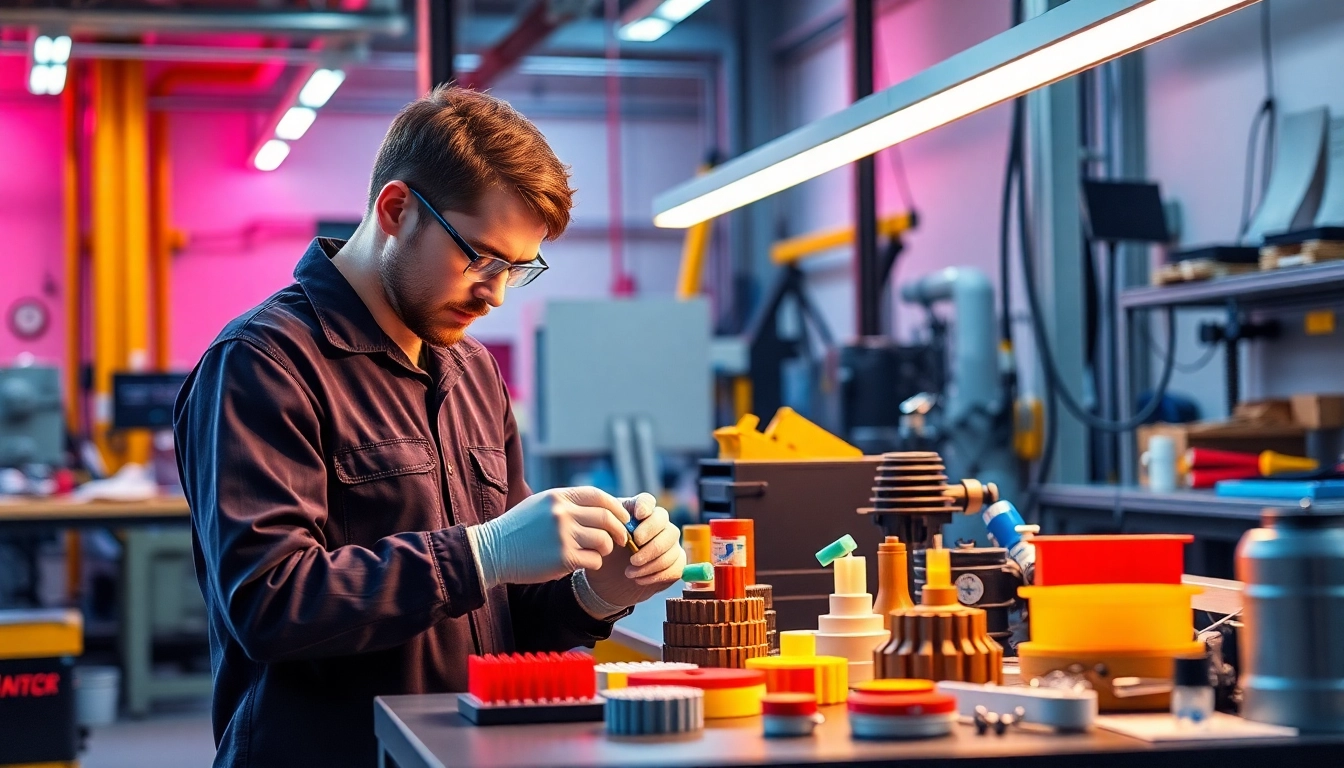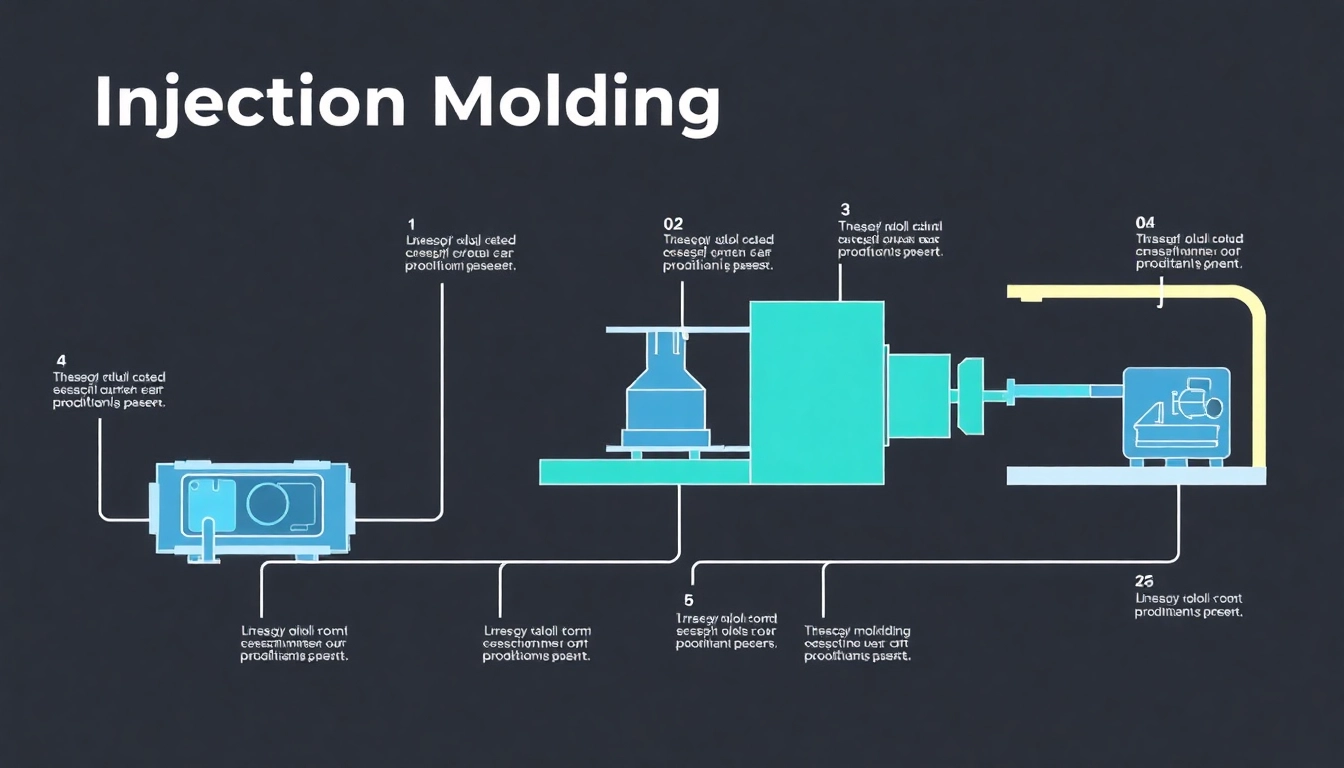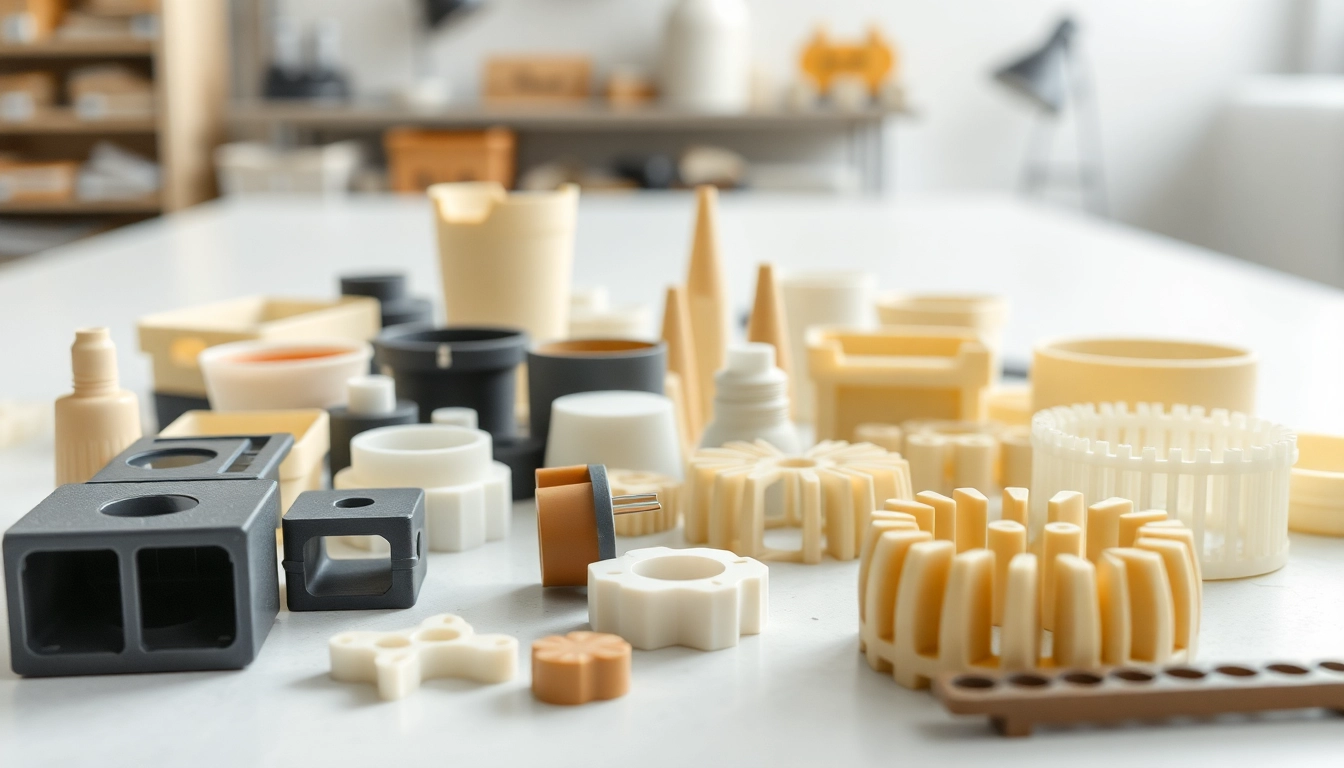Understanding Injection Molding Prototypes
What Are Injection Molding Prototypes?
Injection molding prototypes represent crucial elements in the product development process, serving as tangible models of products to be manufactured. This method involves using injection molding techniques to create prototypes that closely mimic the final product characteristics and functionality. By creating injection molding prototypes, engineers and designers can test, tweak, and finalize their designs through a physical representation before moving to the full-scale production phase.
Essentially, injection molding prototypes allow for testing materials and designs under real-world conditions, mitigating risks associated with potential design flaws or material inadequacies. The process involves injecting molten plastic into a mold to create parts, making this an effective method for high-volume manufacturing.
Benefits of Using Injection Molding Prototypes
The utilization of injection molding prototypes comes with numerous benefits. Firstly, they provide higher accuracy and precision compared to other prototyping methods. This precision is critical in industries where strict tolerances are necessary, such as aerospace and medical device manufacturing.
Secondly, prototypes made using this method deliver functional parts that can be tested under actual use conditions. This real-world testing leads to more reliable data for evaluating the design’s performance. Additionally, using injection molding for prototypes can be more cost-effective in the long run, especially when transitioning to large-scale production since the tooling used can often be repurposed for the final product.
Common Applications in Product Development
Injection molding prototypes are commonly utilized across various industries. In the automotive sector, prototypes can test specific components like dashboards or knobs for fit and functionality. In consumer goods, design teams often create prototypes of plastic containers to assess ergonomics and usability.
Furthermore, electronics manufacturers may use prototypes for housing designs to ensure proper fitting and usability of controls. Each of these applications highlights the significance of injection molding prototypes as integral components in product development phases.
Design Considerations for Injection Molding Prototypes
Key Design Elements to Optimize
Effective design is paramount when creating injection molding prototypes. Designers must consider draft angles, wall thickness, and feature sizes to ensure that parts are easy to extract from molds and present a finished appearance. Draft angles help in reducing friction during mold release, while appropriate wall thickness minimizes warping and ensures structural integrity.
Additionally, incorporating ribs and gussets creates strength without adding significant weight, making prototypes more efficient. Designers should engage in thorough testing of different design configurations to understand the influence of these elements on the final prototype.
Material Selection for Prototyping
The choice of material for injection molding prototypes significantly influences the prototype’s performance and the validation process. Common materials include ABS, polypropylene, and polycarbonate, each offering distinct characteristics such as flexibility, strength, and heat resistance.
Depending on the end-use of the product, selecting the appropriate material can improve the prototype’s usability. For instance, materials simulating the final production material can offer enhanced fidelity in testing, providing better insights during the evaluation phase.
Design for Manufacturability Principles
Adherence to Design for Manufacturability (DfM) principles enhances the production efficiency of injection molded prototypes. This approach emphasizes designing parts that are easier to manufacture and assemble, focusing on simplifying processes without compromising quality.
Some core DfM principles include minimizing the number of components, standardizing parts across designs, and simplifying part geometries. These can lead to significant reductions in production time and costs, making them critical considerations during prototype design.
The Injection Molding Prototype Process
Steps in Prototype Development
The process of developing injection molding prototypes typically involves several steps. Initially, it begins with concept design where engineers create 3D models of the intended product. Once the designs are finalized, the next step involves creating the mold, usually with CNC machining or 3D printing for rapid prototyping.
Following mold creation, the actual injection molding process takes place, which includes injecting the chosen plastic material and allowing it to cool and solidify within the mold. After demolding, prototypes are subjected to various tests for fit and performance validation. This iterative process facilitates necessary modifications before mass production begins.
Timeframes and Cost Estimates
Timeframes for injection molding prototypes can vary significantly based on complexity and material choice, with typical lead times ranging from a few days to several weeks. While initial tooling and setup can present high upfront costs, the investment can yield significant savings when scaling production due to the efficiency of the injection molding process.
Understanding the overall costs involved—from material to machining and testing—allows teams to budget accurately and determine the feasibility of the project compared to alternatives like 3D printing.
Quality Assurance in Prototyping
Quality assurance plays a crucial role in ensuring prototypes meet intended specifications. This often involves testing and inspections at multiple stages of production. Techniques such as dimensional analysis and functional testing help identify any discrepancies early on, ensuring that the prototypes perform as expected.
Utilizing techniques such as Statistical Process Control (SPC) can monitor processes to maintain consistent quality, thus giving more confidence in the transition from prototyping to full-scale production.
Comparing Injection Molding with Other Prototyping Methods
Advantages of Injection Molding Over 3D Printing
While 3D printing is a popular prototyping method, injection molding offers distinct advantages in certain scenarios. Injection molding provides superior surface finish and material properties that often cannot be matched by 3D printed prototypes. Furthermore, when producing multiple units, injection molding becomes more cost-effective due to its higher output rates against the initial mold cost.
Additionally, the process supports a wider range of thermoplastic materials capable of withstanding various environmental conditions, making it the preferred choice for functional prototypes in demanding applications.
When to Choose CNC Machining
CNC machining presents a viable alternative for prototypes when intricate details and tight tolerances are required. While the production speed may be lower compared to injection molding, CNC can offer superior precision for lower volume applications, especially when precise measurements are essential.
Often, engineers may combine methods, utilizing CNC for initial prototypes before transitioning to injection molding for mass production, creating a balanced approach that leverages the strengths of each technique.
Cost-Effectiveness of Prototyping Techniques
Each prototyping method comes with its own cost-benefit profile, impacting the project’s overall budget. While injection molding might present higher initial costs due to tooling, the cost per part significantly decreases during large production runs.
By comparing the upfront costs against a prototype’s functionality and durability, businesses can make informed decisions about which method aligns best with their product development strategy. Conducting a thorough cost analysis while considering the project scope is essential for maximizing investment efficiency.
Case Studies: Successful Injection Molding Prototypes
Industry Examples and Insights
Several companies have successfully harnessed injection molding prototyping for enhanced product development. One notable instance is an automotive manufacturer that leveraged injection molded prototypes to test dashboard ergonomics. This approach allowed refinement of the design based on user feedback before mass production, resulting in a product that aligned with customer expectations.
Similarly, in the medical devices sector, a leading company utilized injection molding prototypes for surgical tools, allowing for rigorous testing against industry standards and ensuring compliance prior to full-scale manufacturing.
Lessons Learned from Prototyping Failures
Not all prototyping efforts are successful, and failures often provide critical lessons. Issues like tool wear, material fatigue, or design oversights can emerge if not anticipated. For instance, a firm that disregarded design for manufacturability principles experienced significant delays and additional costs when parts could not be produced as expected during the injection molding process.
Utilizing feedback from failed prototypes allows teams to address underlying issues and improve future design protocols, ultimately leading to more robust products.
Best Practices for Continuous Improvement
Continuous improvement is fundamental in refining the prototyping process. Establishing a feedback loop from both internal teams and external stakeholders facilitates timely modifications based on real-world experiences. Implementing agile methodologies within prototyping projects allows for iterative development and mitigates risks during product design.
Furthermore, investing in staff training on modern prototyping techniques and tools enhances the team’s ability to adapt to emerging technologies, promoting a culture of innovation aimed at seamless product development.



